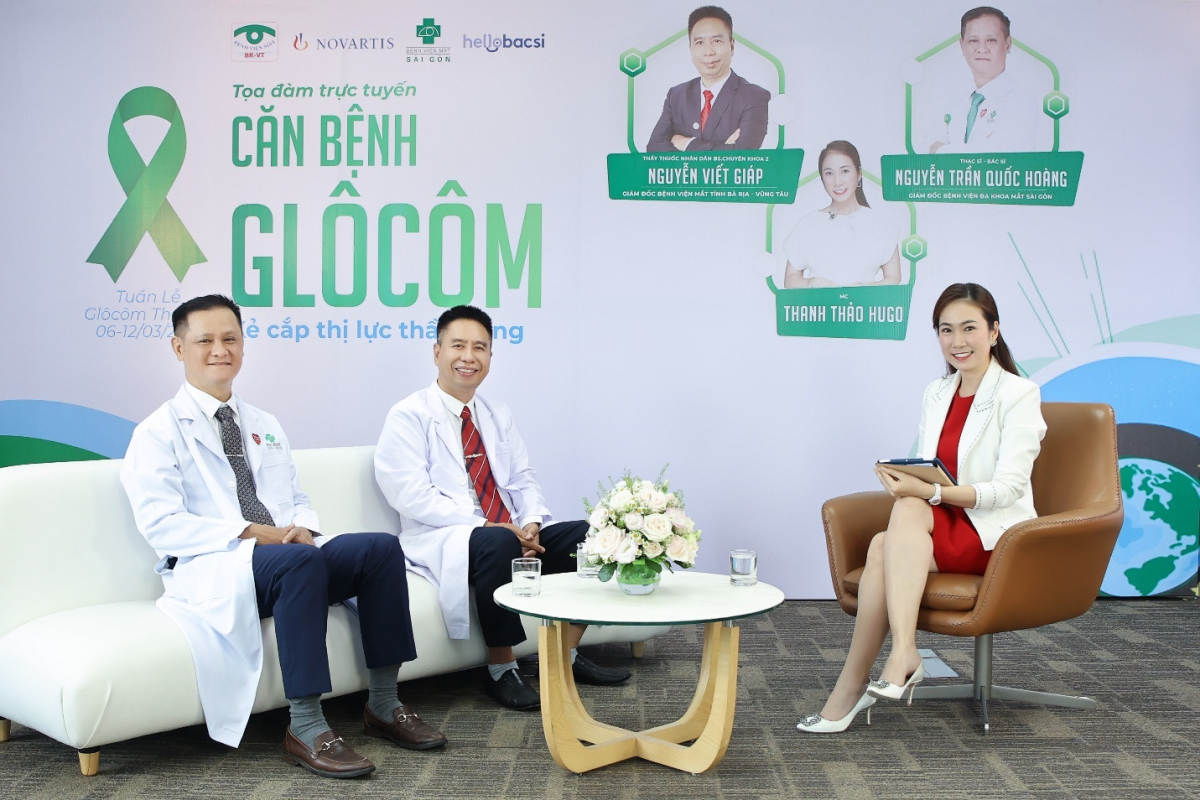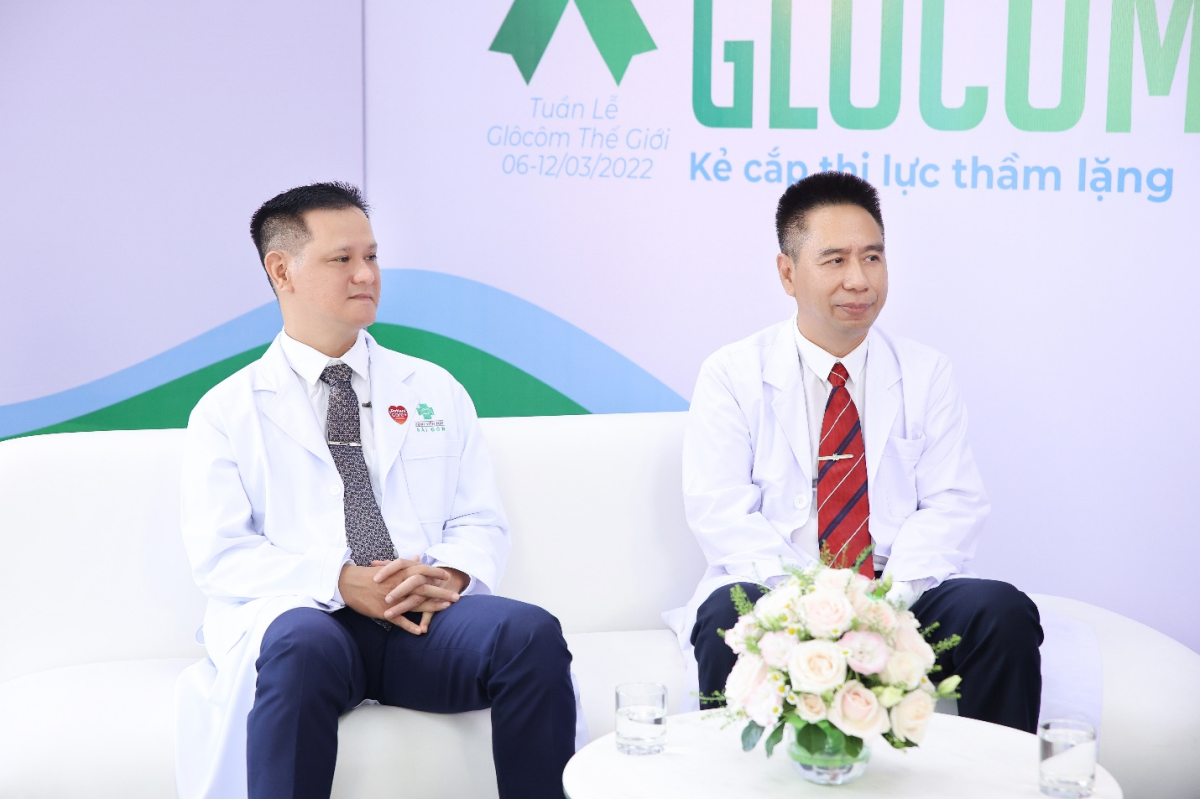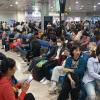The vague symptoms of glaucoma are often overlooked, making this disease the second leading cause of blindness worldwide.
Responding to World Glaucoma Week from March 6 to 12, with the sponsorship of Novartis Vietnam, Ba Ria – Vung Tau Eye Hospital, Saigon Eye Hospital System, and HelloBacsi organized an online seminar: “Glaucoma – The silent thief of sight”. The seminar aimed to bring the most basic knowledge to the community as well as the signs, methods, and timing of glaucoma diagnosis to minimize the risk of impacting eye health.
Glaucoma occurs when the retinal ganglion cells and optic nerve are damaged by increased pressure inside the eye (intraocular pressure) beyond normal, interfering with the transmission of signals from the eye to the brain, which directly impacts the patient’s eyesight and vision. The vague symptoms of glaucoma can often be overlooked, making this disease the second leading cause of blindness worldwide, including Vietnam.
 |
|
Online seminar “Glaucoma – The silent thief of sight” was organized on March 12. Photo by Norvartis |
Sharing the basic definitions of Glaucoma, Dr. Nguyen Viet Giap said that this medical condition is caused by damage to the optic nerve, causing vision and eyesight to be severely affected. Glaucoma makes vision and nerves gradually lose their function and become inactive. Over time, the patient’s vision will shrink, steadily decreasing eyesight and leading to blindness if not treated early and properly.
Accordingly, glaucoma is usually classified into two types: open-angle glaucoma and angle-closure glaucoma. With angle-closure glaucoma, the aqueous humor cannot reach the drainage system, so it becomes stagnant, leading to extremely high pressure in the eyes and causing damage in a short time. Signs often appear suddenly with intense manifestations like severe eye pain, serious vision loss, nausea, demanding emergency care.
In contrast, in open-angle glaucoma, the aqueous humor still reaches the drainage system, but cannot drain because the outlet is blocked, causing high intraocular pressure and damage to vision not as drastic as the angle glaucoma-closure type, with the open-angle variant the most common form, accounting for more than 90 percent of all cases.
 |
|
Dr. Nguyen Tran Quoc Hoang (L) and Dr. Nguyen Viet Giap talk about the impacts of glaucoma. Photo by Norvartis |
Because this disease often has no symptoms in the early stages, it progresses silently, slowly and gradually, so that 50 percent of people with glaucoma are not aware of it. There are cases in which the disease has been diagnosed for 10 years, but the patient does not know it because the eyes are used to the disease and gradually adapt to the glaucoma causes.
“Only when losing a part of the vision or experiencing increasing intraocular pressure during acute episodes will the patient show obvious symptoms and go to the hospital for treatment. At that time, the disease is already at a severe stage and the risk of blindness is remarkably high,” said Dr. Nguyen Tran Quoc Hoang, explaining the reasons for glaucoma’s name, the silent thief of sight.
In addition, doctors stated that Glaucoma can appear at any age, from infants to the elderly. Specifically, the groups at high risk of Glaucoma include,the elderly over 60 years old, people with chronic diseases like diabetes, hypertension, cardiovascular disease, and sickly anemia… individuals with a history of eye trauma or surgery, individuals with high myopia or farsightedness, individuals with a history of long-term use of corticosteroid-containing drugs, and individuals with a family history of Glaucoma (genetic factors that put infants at risk of Glaucoma).
Only detected through eye exam
For cases of chronic claucoma (both angle-closure and open-angle types), it is difficult for patients to recognize the symptoms of the disease in the early stages because it takes place in silence. Because of this, the disease is often only discovered during routine eye exams or when the disease has progressed, severely affecting vision or eyesight. In this case, there are some vague and non-specific warning signs like heaviness in the eyes; eyestrain; transient mild eye pain; witnessing red and blue rings around lights, flashing slightly; frequent eye rubbing; narrowed down vision…
However, in the case of acute glaucoma, the patient will have intense ocular and systemic symptoms like severe unilateral head and ipsilateral eye pain; vision loss, eyesight blurring; seeing halos when looking at night lights; irritation of tears; vomiting, nausea, or fatigue, etc.
Participating experts assert that the best and most effective way to detect glaucoma early is to have routine eye exams, whether people have or do not have eye problems. This will help in early detection and timely treatment of glaucoma to avoid permanent eyesight loss. Specifically, people aged 40 and older are recommended to have an eye examination once a year, and once every six months for those who have relatives with glaucoma, and once a month for patients diagnosed with glaucoma.
- Reduce Hair Loss with PURA D’OR Gold Label Shampoo
- Castor Oil Has Made a “Huge” Difference With Hair and Brow Growth
- Excessive hair loss in men: Signs of illness that cannot be subjective
- Dịch Vụ SEO Website ở Los Angeles, CA: đưa trang web doanh nghiệp bạn lên top Google
- Nails Salon Sierra Madre
 VnExpress News The News Gateway of Vietnam
VnExpress News The News Gateway of Vietnam




